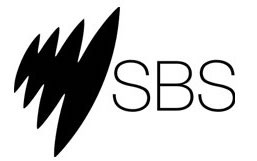
The number of Australian children diagnosed with Autism Spectrum Disorder may have skyrocketed but many will be "un-diagnosed" in adulthood.
Early diagnosis and programs are helping those with Asperger syndrome - now known as high functioning autism - deal with social deficits and other challenges.
"We are now getting people who become what we technically call sub-clinical," autism guru Dr Tony Attwood told AAP.
This means they've reached a "level of expression" that doesn't need specialist services or support.
"It is something that you can actually achieve," added Dr Attwood, a Queensland-based clinical psychologist and world-leading expert on Asperger syndrome.
The proportion of adults diagnosed with ASD in childhood who go on to be sub-clinical is estimated to be 10 per cent to 15 per cent.
"It's not that the ASD is cured. What it means is that certain skills have been learned and the person is much more able to function in society," said Dr Attwood.
The number of Australians diagnosed with autism increased by 42 per cent between 2012 and 2015.
According to the Australian Bureau of Statistics, 164,000 Australians had an autism diagnosis in 2015.
But unfortunately too many girls still miss out on early intervention, Dr Attwood said.
"Girls are diagnosed later, often in the teenage years, and by the time they are diagnosed their length of time with intensive intervention programs is very limited.
"They've usually camouflaged their symptoms and social confusion until the wheels fall off at high school."
Some evidence suggests ASD is about 4.5 times more common in boys than in girls.
UK professor Simon Baron-Cohen - cousin of actor and comedian Sacha Baron Cohen - argues autism is the expression of the "extreme male brain".
But not everyone is convinced, including Dr Attwood.
He says the "true ratio" is 2:1 - two boys to one girl.
In primary school the ratio can be 5:1, but this is because girls are better at hiding ASD.
"It is more conspicuous in boys but girls are smarter and more creative with how they cope with it," Dr Atwood said.
"But it means at a terrible cost for potential low self-esteem and depression."
World Autism Awareness Day was celebrated on April 2 this week.
Dr Attwood - who has worked in the field for four decades - would like to see more follow-up studies done and says there is still a greater need for acceptance.
It's also important, he says, to recognise the extreme difficulties teenagers with ASD face at high school where they are "forced every lunch time into intense social interaction with toxic teenagers".
"The intensity of inclusion and engagement amongst teenagers is horrendous for those with Asperger's," Dr Attwood said.
The number of Australian children diagnosed with Autism Spectrum Disorder may have skyrocketed but many will be "un-diagnosed" in adulthood.
Early diagnosis and programs are helping those with Asperger syndrome - now known as high functioning autism - deal with social deficits and other challenges.
"We are now getting people who become what we technically call sub-clinical," autism guru Dr Tony Attwood told AAP.
This means they've reached a "level of expression" that doesn't need specialist services or support.
"It is something that you can actually achieve," added Dr Attwood, a Queensland-based clinical psychologist and world-leading expert on Asperger syndrome.
The proportion of adults diagnosed with ASD in childhood who go on to be sub-clinical is estimated to be 10 per cent to 15 per cent.
"It's not that the ASD is cured. What it means is that certain skills have been learned and the person is much more able to function in society," said Dr Attwood.
The number of Australians diagnosed with autism increased by 42 per cent between 2012 and 2015.
According to the Australian Bureau of Statistics, 164,000 Australians had an autism diagnosis in 2015.
But unfortunately too many girls still miss out on early intervention, Dr Attwood said.
"Girls are diagnosed later, often in the teenage years, and by the time they are diagnosed their length of time with intensive intervention programs is very limited.
"They've usually camouflaged their symptoms and social confusion until the wheels fall off at high school."
Some evidence suggests ASD is about 4.5 times more common in boys than in girls.
UK professor Simon Baron-Cohen - cousin of actor and comedian Sacha Baron Cohen - argues autism is the expression of the "extreme male brain".
But not everyone is convinced, including Dr Attwood.
He says the "true ratio" is 2:1 - two boys to one girl.
In primary school the ratio can be 5:1, but this is because girls are better at hiding ASD.
"It is more conspicuous in boys but girls are smarter and more creative with how they cope with it," Dr Atwood said.
"But it means at a terrible cost for potential low self-esteem and depression."
World Autism Awareness Day was celebrated on April 2 this week.
Dr Attwood - who has worked in the field for four decades - would like to see more follow-up studies done and says there is still a greater need for acceptance.
It's also important, he says, to recognise the extreme difficulties teenagers with ASD face at high school where they are "forced every lunch time into intense social interaction with toxic teenagers".
"The intensity of inclusion and engagement amongst teenagers is horrendous for those with Asperger's," Dr Attwood said.